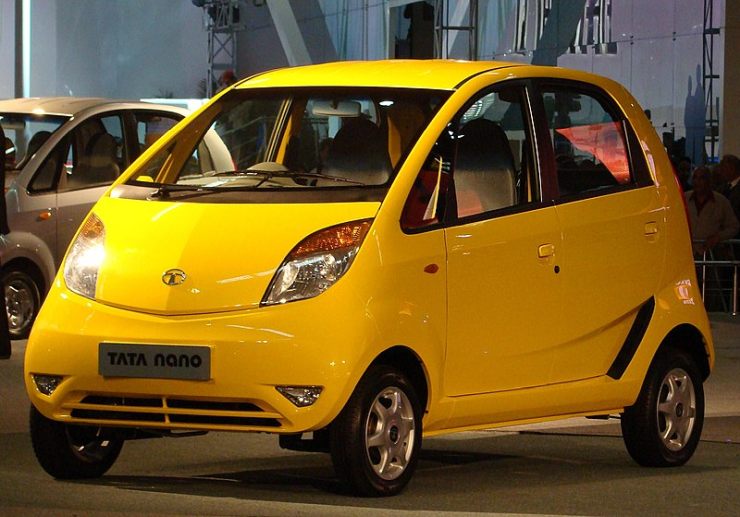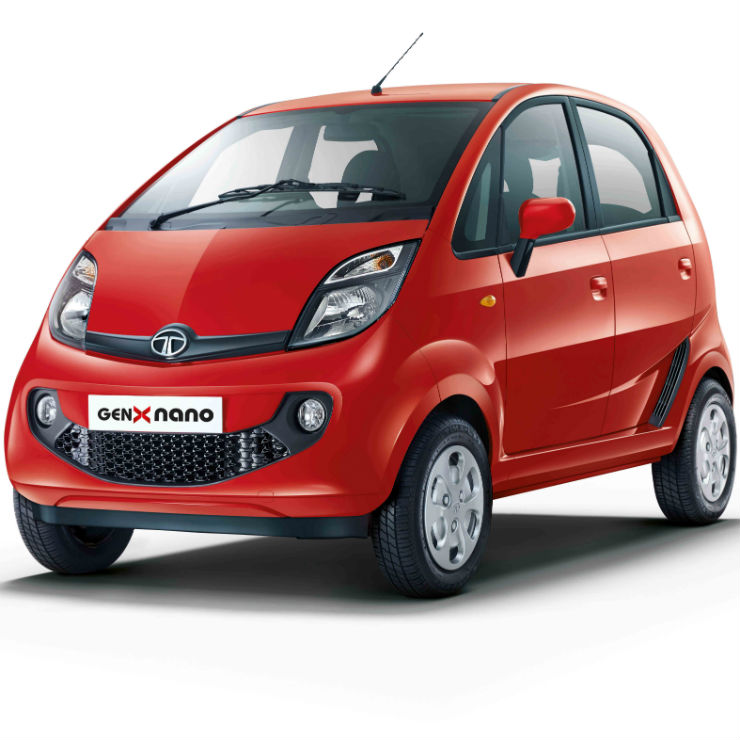Reimagining the Tata Nano as an ICE/ Electric Vehicle for 2024
In 2024, the automotive industry in India continues to evolve, with electric vehicles (EVs) gaining momentum amidst increasing environmental concerns and government incentives for cleaner technologies. In this context, let’s speculate on the potential revival of the Tata Nano, an electric vehicle that could redefine urban mobility.
First, let’s be very clear. There are no official plans for a Tata Nano revival. We are just speculating here.
Why the Original Nano Failed and Lessons Learned

The Tata Nano initially failed due to several factors including safety concerns, market perception as a “cheap” car, and competitive pressure from the used car market. Recognizing these challenges, Tata Motors has since improved its technological capabilities and market strategy significantly, evidenced by the success of models like Nexon, Harrier, and Safari.
Imagining a 2024 Tata Nano ICE and EV: Practicality and Market Appeal
The 2024 Tata Nano would ideally combine the compact and efficient design of the original Nano with advanced safety features and modern technology. A proposed 5-star safety rating, robust 70 BHP engine, touchscreen interfaces with ADAS (Advanced Driver Assistance Systems), and other tech-forward features could significantly enhance its appeal.
Cost of Building and Market Conditions

In 2024, building an electric Nano, hypothetically priced between Rs 6-7 lakhs for standard models and Rs 10 lakhs for an EV version, involves significant investment in technology and manufacturing. The cost dynamics of battery production, which is a major component of EVs, have improved but remain substantial. However, with Tata Motors’ commitment to electrification, economies of scale could potentially reduce costs over time.
Speculating the Specifications of a Future Tata Nano EV
![]()
Vehicle Specifications: Power and Range
A future Tata Nano EV could potentially feature a compact yet powerful electric motor. Considering the vehicle’s urban-centric design, a 50-60 BHP electric motor (with around 150 Nm torque) would provide sufficient power for city driving, delivering smooth acceleration and a responsive driving experience. The range is a critical aspect for EV acceptance; thus, a realistic target for the Nano EV would be between 200-220 km on a single charge. This range would be adequate for daily commutes and short trips, which are typical for the vehicle’s target demographic.
Battery and Charging
To support this range, the Nano EV could be equipped with a lithium-ion battery pack of around 20 kWH, which is similar to the 19.2 kWH rating of the base Tiago EV. This size is cost-effective and light enough not to undermine the vehicle’s performance. With the advancements in fast charging technology, the Urbanite should offer fast charging capabilities, allowing a charge from 0 to 80% in less than an hour with a suitable charger.
Safety Features
For safety, the new Nano EV would aim for a 5-star rating in local safety tests, such as those conducted by Global NCAP. It would feature multiple airbags, ABS with EBD, a robust crash structure, and pedestrian safety features. Advanced safety technologies might include lane-keeping assist, automatic emergency braking, and collision detection, which would significantly elevate its safety profile compared to the original Nano.
Connectivity and Tech Features
In terms of technology, the Nano EV would likely boast a modern infotainment system with a large touchscreen interface compatible with both Android Auto and Apple CarPlay. Connectivity features could include GPS navigation, real-time vehicle diagnostics, and mobile connectivity for remote functions like climate control pre-setting and battery charge monitoring. Advanced features might include a 360-degree camera system and an advanced driver-assistance system (ADAS) to enhance the driving experience and safety.
Style and Design
This is crucial. The future Nano has to look amazing, classy and premium. It has to step far away from the original ‘cheap car’ concept. Looks have to be closer to the Megapixel concept than the Nano. Or it can look even more radical. But to click as a successful city runabout, the Nano has to be loved by buyers. And that takes some serious design efforts.
Cost of Building and Estimated Price Point
The cost of building an electric car, primarily influenced by the battery system, is higher than traditional vehicles but is decreasing with advances in technology and production scale. For the 2024 or 2025 Nano, the major investment would involve the battery, electric drivetrain, and the integration of high-tech safety and connectivity features. The total manufacturing cost for Tata could be approximately Rs 4-5 lakhs per unit in mass production.
Given these costs and the Indian market’s price sensitivity, the future Tata Nano could be realistically priced around Rs 10 lakhs for the base model. This price point would make it an attractive option for urban buyers looking for a feature-rich, safe, and eco-friendly vehicle, while ensuring Tata Motors maintains a reasonable profit margin.
Market Viability
Pricing the Nano EV at about Rs 10 lakhs would position it competitively against other small EVs in the market, potentially making it a popular choice for city dwellers seeking a compact, efficient, and technologically advanced vehicle. The success would also hinge on continued government support for EVs, such as subsidies, tax breaks, and further development of charging infrastructure, which would enhance the overall attractiveness of owning an EV in India.
Buyer Perceptions and Demand
The success of an electric Tata Nano would depend heavily on shifting consumer perceptions. By distancing the brand from the “cheap car” image and focusing on safety, performance, and technology, Tata could position the Nano EV as a desirable, affordable urban electric vehicle. Additionally, the growing awareness and preference for EVs in India due to rising fuel costs and environmental concerns would likely bolster its appeal.
Market Readiness
India’s EV infrastructure is burgeoning, with government policies supporting EV adoption through subsidies and the establishment of charging networks.
The idea of a Tata Nano reborn as an electric vehicle is intriguing. It leverages Tata’s existing strengths while aligning with global trends toward sustainability and advanced automotive technology. Ultimately, the decision to adopt such a vehicle would rest with Indian consumers, who are increasingly looking for vehicles that combine affordability with environmental consciousness and cutting-edge technology.
The post Rs 10 Lakh Supercool Nano EV, Or Rs 6 Lakh Modern Petrol Nano – Both High Tech, 5-Star Safety: Which Will You Buy? first appeared on Cartoq.
Source link

